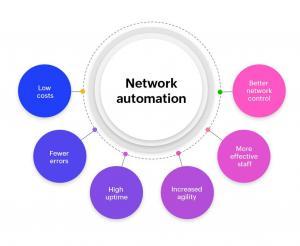Operations | Monitoring | ITSM | DevOps | Cloud
Automation
Code Manager improvements reduce deployment time and effort
Over the past few months, we set out to drastically reduce the amount of time Code Manager takes to deploy code and sand down some rough edges to make it more stable and robust. In order to understand what we were able to achieve, we need a quick primer on how code is deployed to a Puppet Server in the first place. There are three parts to a Code Manager code deployment: We’ve improved each of these three parts of the Code Manager code deployment.
Get powerful insights across your infrastructure with new data filters
Would your organization benefit from having powerful, yet easy-to-use filters to inspect your nodes? With our latest Continuous Delivery for Puppet Enterprise release, we’ve updated the filters in the user interface to support more advanced queries. SysAdmins, developers, DataOps, and IT managers will all benefit from having access to these powerful filters.
5 automation tools you should use or look into
One of the questions I regularly get asked is what common automation tools do I use or what do I advise people to use for various use cases? I thought I’d put this information into a blog for easy reference for our partners and others. Note: None of the recommendations below are commercial endorsements, but they are suggestions based on what I’ve used personally in the past. You are welcome to use whatever you want since most of the things below have other options, free or paid.
Puppet Enterprise installation and self-signed Intermediate CA
This article is about how to install Puppet Enterprise using your own self-signed Intermediate CA (Certificate Authority). In some environments, regulations require you to intercept and inspect all SSL traffic to detect malicious activities that could otherwise masquerade as legitimate encrypted traffic. This requires the ability to decrypt and re-encrypt the stream in real time, which can only be done with the proper certificates installed.
D2iQ & the Future of Smart Cloud Native/AI
Writing a cfbs module for your custom policy update
I re-stumbled across this mailing list post from Bryan Burke about some policy framework upgrade issues where he also asked about hooking in and customizing the update policy. I thought this sounded like a good opportunity for an example using a cfbs module. So, let’s take a look at making a cfbs module for a custom update policy. As mentioned in the thread there are just a couple of things you need to do in order to hook in and customize the behavior of the update policy.
3 ways automation can improve ITSM and customer service
IT service management (ITSM)—the management and support of IT services—is vital for good customer service. It encompasses problem management, incident management, change and release management, and service-level management. Because it’s an integral part of customer service, it’s important to keep it optimized and streamlined. Here are three ways automation can help with those efforts.
Collective Cybersecurity: A Shared Responsibility Model
The state of cybersecurity today is, in a word, catastrophic. Breaches have become endemic. Not only do they continue at dizzying rates, but they are actually increasing in frequency by the month. Why are things so bad? And why do businesses seem so helpless to make them better? Those are complicated questions without simple answers, of course – but I believe that a major part of the answer has to do with the fact that, at most organizations, security remains the domain of elite security teams.
Network automation tools
“Automation applied to an inefficient operation will magnify the inefficiency.” – Bill Gates A network, as we all know, is the connection of multiple devices to share information between them. While it’s a major task to manually manage every device connected to a network, a software-based feature called network automation can be utilized to help overcome this challenge.











